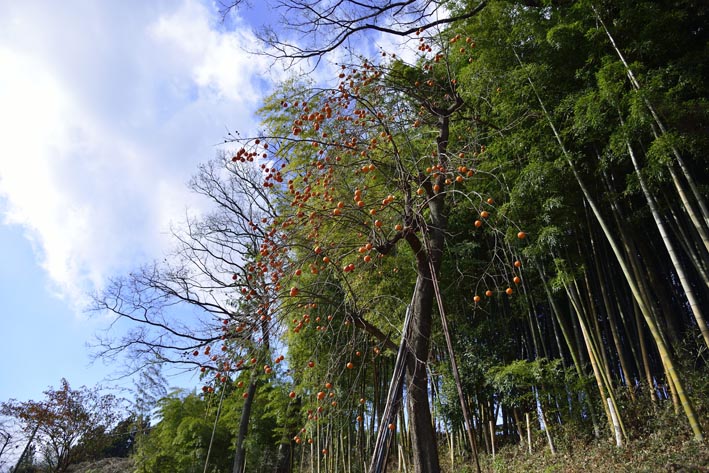What kind of lives are the children who were forced to flee from radiation into evacuation in different parts of Japan now experiencing? What has become of the schools that were affected by the disaster? Are the children who remained in the affected areas now able to enjoy a good quality school life? These questions have remained in my heart since that day, three years and eight months ago. At the end of October 2014, I visited the Futaba area in Fukushima Prefecture, observed classes, met with the children and learned of the distress in the schools from teaching staff, including principals and assistant principals, and also from related officials such as the local superintendant of schools. As Fukushima City is the capital of Fukushima Prefecture, the Fukushima high-speed Shinkansen train station is quite impressive, but the monitoring post in a small park around the side of the station showed the air dose rate to be 0.206 microsieverts/hour (μSv/h). My own radiation counter indicated 0.24 to 0.28 μSv/h. Converting to annual dose rates gives 1.8 mSv or 2.10 to 2.45 mSv. Perhaps it would be fair to say that the annual dose rate was about 2 mSv. However, international recommendations call for an annual dose rate of less than 1 mSv. That value would correspond to 0.11 μSv/h. Basing myself in Fukushima City, I travelled back and forth from central Fukushima Prefecture to the Fukushima coastline in the east. Passing through Iwaki City, Miharu Town, and Nihonmatsu City, I measured the air dose rate in the car, as I also did in the entrance halls, school yards and inside the buildings of the schools I visited. Inside the school buildings where the children are studying, including the corridors and classrooms, the air dose rate was 0.1 to 0.2 μSv/h. In particular, there were places where the dose rate in the school yard exceeded 0.2 μSv/h. Thus the dose rates were just within, or in many cases exceeded, the internationally-recognized limits. Passing through the rural areas in the car, the persimmon trees, now leafless but heavy with the orange colored fruit, seemed to glow here and there in the evening sun. This peaceful-looking scenery continued for many miles. In the background to the narrow roads, just wide enough for a car to pass, the footpaths between fields, or the long but slightly sloped river banks, there were woodlands, and in many places thick forests could be seen. It is impossible to consider that these places will ever be decontaminated. Since the half life of Cesium-137 is 30 years, nothing can be done but to wait. Perhaps it will be several hundred years before people can live here with peace of mind. I found this to be an extremely gloomy and worrying prospect. In April 2011 (April is the beginning of the academic year in Japan), a total of 70 schools in Fukushima Prefecture were temporarily closed because they were unable to restart, or had been temporarily relocated. Of these, 38 were elementary schools, 20 were middle schools, 11 were high schools and one was a special-needs school. With the exception of one elementary school, all of these temporary closures or relocations were due to the nuclear power station explosions. A total of 8,013 students and 1,582 school teachers and staff were affected. Three years later, in April 2014, schools which are still not able to restart and remain temporarily closed are four elementary schools and two middle schools run by Namie Town. The teachers and staff have been reassigned to “additional posts” in different schools all across the prefecture. The number of Fukushima schools that have returned to the original location and have reopened is 15 elementary schools and eight middle schools. Besides these, 19 elementary schools and ten middle schools have borrowed classrooms in other schools, have been closed through amalgamation with other schools, or have reopened by relocating temporarily to private facilities. Many of the schoolchildren who remained in Fukushima Prefecture are living in temporary housing and are spending an hour to 90 minutes each way in school buses getting to and from school. They leave their homes before 7 a.m. and return in the early evening or sometimes after nightfall. Fatigue is accumulating among the younger elementary school children. Sports activities are limited due to lack of or insufficient school yards. Moreover, the long commuting times mean that all kinds of activities cannot be carried out satisfactorily. Some of the teachers and school staff commute more than 70 km each way to their schools. This was supposed to happen for only one year, but already more than three years have passed. The teachers lamented the fact that there does not seem to be any end to this situation in sight. In the case of two of the municipal elementary schools in Namie Town, Namie Elementary School and Tsushima Elementary School, a school building belonging to a former school was discovered in Nihonmatsu City, and both schools have relocated and reopened in the one building. In April 2011, all 558 students and 58 students, respectively, from the two schools began to attend this relocated school, but by April 2014 the numbers of students from the two schools had fallen drastically to a mere 19 students and 3 students. Some grades have zero students. Where there are students in a classroom, there may be two or three students studying together with several teachers. This is very far from the image we have of a school where children are cheerfully playing and studying while surrounded by a large number of friends and teachers. With sad expressions, the teachers said they felt uncertain whether the students now in the school would be able to graduate from that school, or whether new students would enter in April 2015. (Yukio Yamaguchi, CNIC Co-director) Return to NIT 164 contents |

| CNIC Citizens' Nuclear Information Center Akebonobashi Co-op 2F-B, 8-5 Sumiyoshi-cho, Shinjuku-ku, Tokyo, 162-0065, Japan TEL.03-3357-3800 FAX.03-3357-3801 Map http://cnic.jp/english/ |

